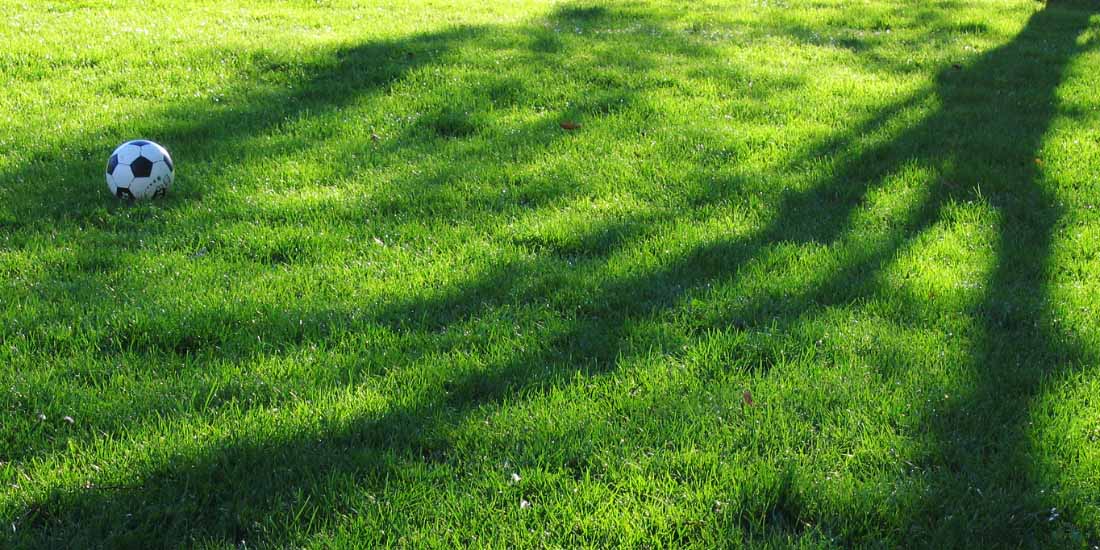How do you grow grass in a shady lawn

One of the most important steps to growing grass in a shady lawn is to pick a specialist grass seed mix that will grow well in the shade. Knowing how and when to sow your seed and applying the correct aftercare will also help its growth. So, keep reading for helpful advice on selecting the best grass seeds for shady areas and achieving the perfect garden lawn.
Picking the best grass seeds for shady areas
Since regular grass seed does not grow well in the shade due to the lack of light, moisture, and nutrients, choosing the best grass seed for shaded areas ensures your lawn grows well, regardless of whether you have large trees, hedgerows, fences, or walls blocking sunlight.
How to grow grass seeds in the shady areas of your lawn
Knowing how to grow grass in a shady lawn will increase the growth of your grass and get you the garden lawn you’ve been dreaming of. When using normal grass seed, the shaded areas of your lawn will often be patchy, and there may even be parts of your garden where the grass has stopped growing altogether. So, using our specialist shade-tolerant grass seed mixtures, your lawn will grow exceptionally well in the shade.
We have seed mix options for growing in either dappled/partial shade or areas in complete shade:
STEADFAST: Shade
Ideal for areas of your garden that experience dappled, non-permanent shade that moves across your lawn during the day - STEADFAST: Shade grows well in these areas where regular grass seed struggles to grow. This seed mix contains perennial ryegrass that’s hardwearing and fescues (Strong Creeping Red Fescue, Chewings Fescue, and Hard Fescue) that provide lushness. We have added a lawn seed for shaded areas: the Smooth Stalked Meadow Grass in the mix is a specialist shade lawn seed that gives STEADFAST: Shade the shade tolerance it needs to thrive in these challenging growing conditions.
STEADFAST: Ultra Shade
Our STEADFAST: Ultra Shade grass seed mix is the ultimate grass seeds for shady areas solution for the areas of your garden that are deprived of sunlight – like the shadowed areas beneath trees, dense hedgerows, and tall fences and walls. This specialist blend features Chewings Fescue and Smooth Stalked Meadow Grass and Poa Supina grass seeds, which ensures this shade-tolerant mixture grows well in areas without sunlight.
When to sow grass seed in the shady areas of your lawn
The best time to grow grass in a shady lawn in the UK is when temperatures have reached 15 °C and higher. Generally, between May and the end of summer are ideal for sowing this grass seed, but keep an eye on the weather forecast because parts of the UK often get these temperatures sooner.
How to sow grass seed
The final step is sowing the grass seed, which can be done by simply scattering it by hand or using a handheld seed spreader. When sowing a new lawn, we recommend sowing the seed at 50g per metre squared (m2), and if you’re overseeding an existing lawn, we recommend sowing at 35g per m2.
For your convenience, we have broken the process of sowing grass seeds in shady areas of your lawn into some easy-to-follow steps below:
Steps for sowing a new lawn
- Dig the soil over to a depth of 20-25cm
- Remove weeds by hand or use a feed, weed and moss killer
- Add topsoil if you believe the soil to be poor quality
- Rake the area to get a level seedbed
- Sow the seed at our recommended rate of 50g per m2 by using a seed spreader or your hand
- Rake the seed in after sowing so that the seed is in amongst the soil
- Firm down by foot or by using a roller to improve seed-to-soil contact
Steps for overseeding an existing lawn
- Remove any dead grass, weeds or moss by scarifying/raking the area
- Rake the area enough so that the soil is loose
- Sow the seed at our recommended rate of 35g per m2 by using a seed spreader or your hand
- Sow between 5mm and 10mm beneath the surface. That’s about 3-pound coins deep (stacked).
- Rake the seed in after sowing so that the seed is in amongst the soil
- Firm down by foot or by using a roller to improve seed-to-soil contact
Lawn seed aftercare
- Continue to water your lawn deeply and daily for the next six weeks, avoiding when it is raining
- Your lawn will take up to 6 weeks to fully establish
- Once there is even coverage throughout the lawn, and grass blades have grown to 5-7cm, your lawn is ready for its first mow.
- To keep your lawn healthy and weed-free, remember to regularly fertilise - you can find our fertiliser guide here.
Growing grass in a shady lawn
Knowing what grass seed to use in a shady lawn is the most important step in getting your lawn growing beautifully again. Followed by knowing when to plant it and how to sow the seed.
For further reading, we have listed some of our popular lawn care tips below:
- The Ultimate Grass Seed Guide
- Grass seed for shade
- Choosing the best grass seeds for shady areas
- What grass seed for shaded areas
But if you have any questions about growing grass on a shady lawn or have any queries about your garden, please send us a message, and we will be happy to help.